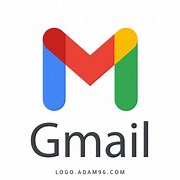Gmail was created as a response to complaints from a customer who complained about the poor quality of email services.

Google’s email service, Gmail, celebrates 20 years since its launch as one of the most used email services globally, and with Artificial Intelligence (AI)-powered features as the future of the service, thanks to the implementation of its Gemini assistant.
On April 1, 2004, Google announced its new Gmail product, a free service that the company defined as a type of search-based webmail. At that time, it had a storage capacity of up to 1GB of information, which is the equivalent of 50,000 pages of email for each user.


As explained at the time of its launch by Google’s then-co-founder and president of Products, Larry Page, the idea for Gmail was the result of complaints from a customer, who pointed out that email services at the time were of poor quality and forced users to archive or search for messages manually. And they wasted time deleting emails to keep space under the limit.
As Page stressed, unlike other webmail services, Gmail was based on the idea that users “should never have to archive or delete a message, or have a hard time finding an email.”
 Gistfox Your News Window To The World.
Gistfox Your News Window To The World.





